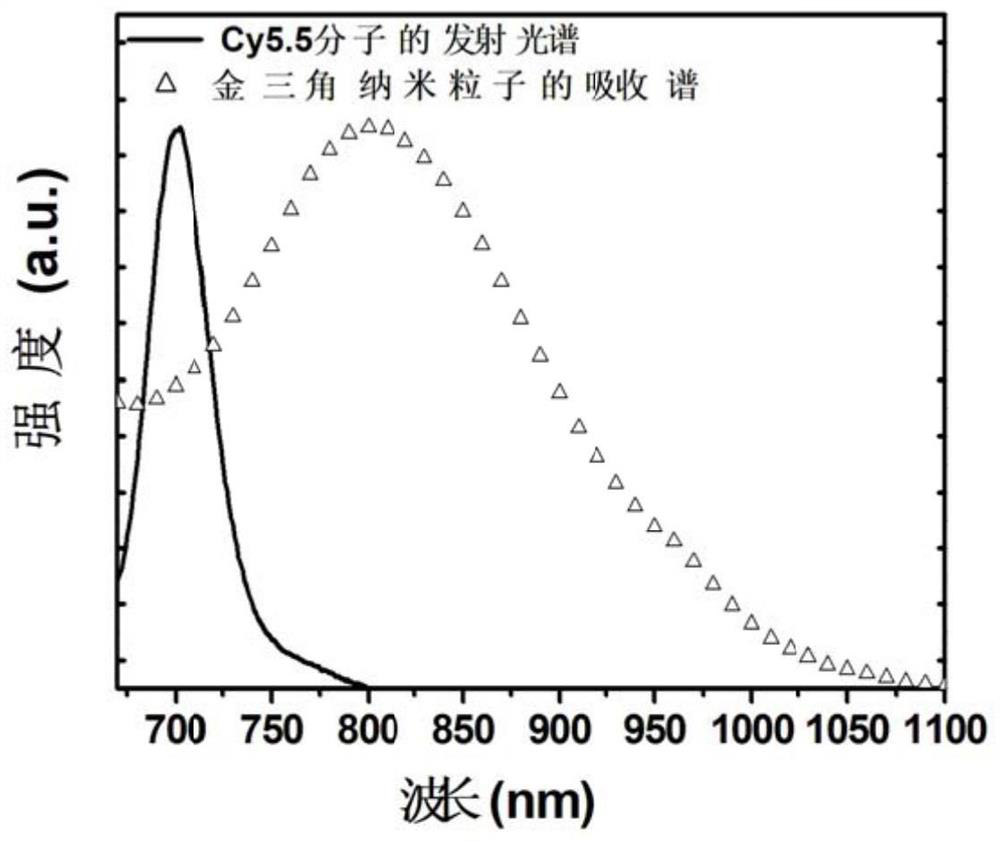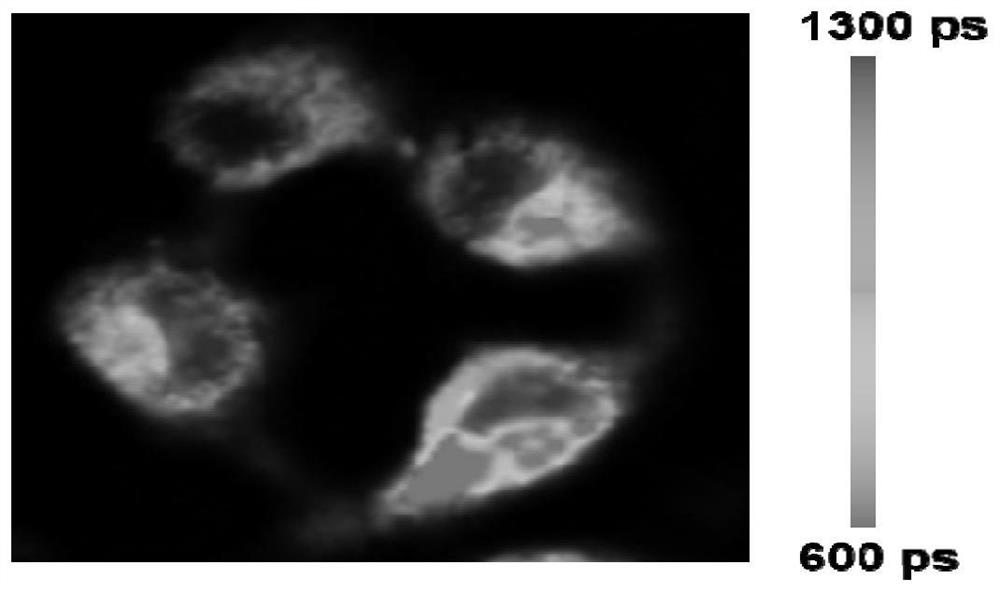Method for detecting intracellular cytochrome c based on near-infrared fluorescence lifetime imaging
A technology of fluorescence lifetime and detection method, which is applied in the field of chemistry and can solve problems such as reducing detection sensitivity
- Summary
- Abstract
- Description
- Claims
- Application Information
AI Technical Summary
Problems solved by technology
Method used
Image
Examples
Embodiment 1
[0028] 1) Preparation of gold nanorod particles: 75 μL of HAuCl4 (0.01M) was added to 2.5 mL of CTAB (0.1M) to form a homogeneous mixture. Afterwards, 200 μL of NaBH4 (10 mM) was quickly injected into the above mixture under vigorous stirring, and the gold nanometer seed solution was obtained immediately. Afterwards, a gold nanorod growth solution containing CTAB (0.1M, 50mL), AgNO3 (0.01M, 0.5mL), HAuCl4 (0.01M, 2.5mL) and ascorbic acid (0.1M, 0.375mL) was prepared. Get gold seed solution 0.5mL and join in above-mentioned growth liquid, after reacting at room temperature for 2.5 hours, the solution is centrifuged (1000rpm, 15 minutes. It redisperses in deionized water.
[0029] 2) Preparation of gold nanorod@Cy5.5 complex: take gold nanorod particles (about 0.1nM, 2mL) in step 1), mix with 200μL (500nM) thiol nucleic acid aptamer overnight, centrifuge at 10000rpm for 15min, centrifuge twice Remove excess unconnected nucleic acid aptamer once, redisperse and dilute the precip...
Embodiment 2
[0032]Detection of carcinoembryonic antigen: the gold nanorod particles@Cy5.5 complex obtained in Example 1 (concentration in the cell culture medium is 0.025nM), incubated with the cells for 6 hours (same as in Example 1), and added After incubating 2 μM podidine in 2 mL DMEM at 37°C for two hours, under the excitation of 633nm near-infrared laser, the fluorescence lifetime imaging was tested, and the cell fluorescence imaging image is shown in Figure 5 As shown, the average lifetime is 820ps. Since etoposide can effectively induce cells to produce cytochrome c, the dose of etoposide is increased compared to Example 2, thus more cytochrome c can be induced, and the fluorescence lifetime of Cy5.5 molecules increases, The average lifespan continued to increase to 820 ps, so it could be judged that intracellular cytochrome c was produced in large quantities.
Embodiment 3
[0034] The gold nanorod particles@Cy5.5 complex obtained in Example 1 (concentration in the cell culture medium is 0.025nM) was incubated with the cells for 6 hours (same step as in Example 1), and 5 μM of etoposide was added in 2 mL DMEM At 37°C, after incubation for two hours, under the excitation of 633nm near-infrared laser, test the fluorescence lifetime imaging, the cell fluorescence imaging picture is as follows Figure 6 As shown, the average lifetime is 980ps. Since etoposide can effectively induce cells to produce cytochrome c, the dose of etoposide is increased compared to Example 3, thereby inducing more cytochrome c, and the fluorescence lifetime of the Cy5.5 molecule increases, The average lifespan continued to increase to 980 ps, so it could be judged that intracellular cytochrome c was produced in large quantities.
PUM
| Property | Measurement | Unit |
|---|---|---|
| wavelength | aaaaa | aaaaa |
Abstract
Description
Claims
Application Information
 Login to View More
Login to View More - R&D
- Intellectual Property
- Life Sciences
- Materials
- Tech Scout
- Unparalleled Data Quality
- Higher Quality Content
- 60% Fewer Hallucinations
Browse by: Latest US Patents, China's latest patents, Technical Efficacy Thesaurus, Application Domain, Technology Topic, Popular Technical Reports.
© 2025 PatSnap. All rights reserved.Legal|Privacy policy|Modern Slavery Act Transparency Statement|Sitemap|About US| Contact US: help@patsnap.com



